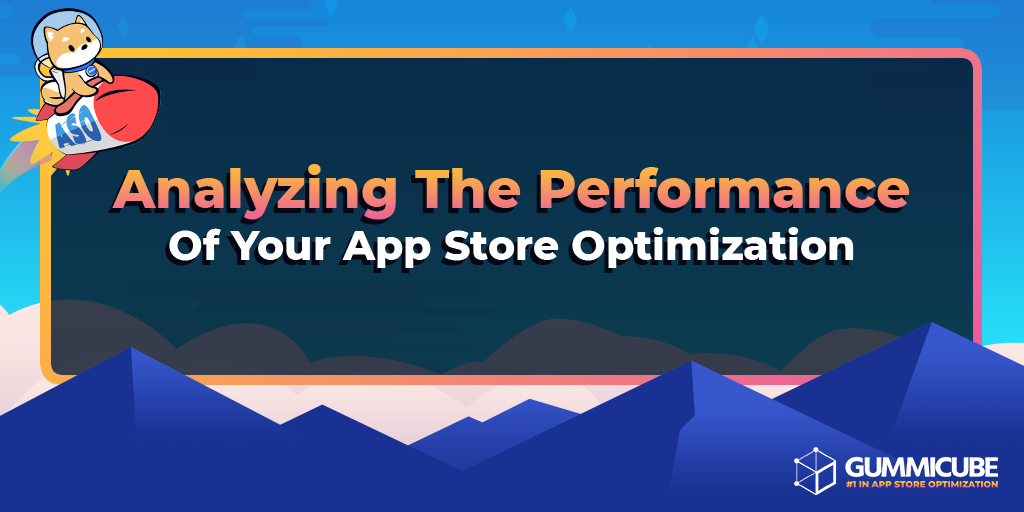App Store Optimization – understanding key iOS metrics and sources
- Tuesday, March 16th, 2021
- Share this article:
Dave Bell, Co-founder and CEO of Gummicube, looks at the key metrics to measure, and the different types of metrics available for marketers to tap into in Apples App Store.
 When launching App Store Optimization and other mobile app marketing initiatives, simply knowing that downloads move up or down does not paint the full picture of performance. In order to improve metrics, it’s important to understand what they actually mean and how to interpret them correctly. Understanding where traffic is coming from, and what Apple’s performance indicators actually mean, all allow you to build on the success of past updates and continue to grow.
When launching App Store Optimization and other mobile app marketing initiatives, simply knowing that downloads move up or down does not paint the full picture of performance. In order to improve metrics, it’s important to understand what they actually mean and how to interpret them correctly. Understanding where traffic is coming from, and what Apple’s performance indicators actually mean, all allow you to build on the success of past updates and continue to grow.
Different types of campaigns will have different objectives, from re-engagement, to retention, to optimizing towards a specific action. But before these goals can be optimized towards, we’ll need to start with the fundamentals: increasing discoverability and increasing installs.
Key Metrics: Impressions and App Units
The most basic of metrics to measure when optimizing are Impressions and App Units. Knowing exactly what these are is the first step in understanding performance.
Impressions:
Impressions are a measure of when your app was seen by a user in the App Store, in any way. This can range from finding your app on the Today tab or Search results, to being driven there directly from another app or a website.
Impressions differ from another visibility metric, Product Page Views, in that a user does not need to actually go to the page to be tagged as having “seen” your app. According to Apple, 70 per cent of App Store visitors use search to find apps – and the majority of those users will download directly from search results without ever viewing your Product Page.
Because of this, understanding how you convert from an Impression, rather than how you convert from a Product Page View, can give better insight into performance.
App Units:
App Units are the number of first-time new downloads for your app. Calculating the ratio between Impressions and App Units will give you a sense of how your app converts. Unlike App Store Connect’s Installs metric, App Units only calculate new users and do not require an additional opt-in like Installs do.
Key Differences in App Store Connect Metrics:
If you use third party attribution tools, you may see a disparity between what each platform’s equivalent of an “Impression” and an “App Unit” is. App Store Connect is the only way to understand total impressions from organic, and how many users tap “GET” from the store.
Third party tools are useful, but track in a different way – typically when a new user opens the app for the first time, rather than when they tap GET from the store. Knowing the differences in how this data is tracked can help you make sense of metrics across various platforms.
Traffic Channels and Sources
App Store Connect breaks down traffic into four main sources, with a fifth added recently specifically for iOS 13’s “App Clips” feature. These four main channels include:
App Referrer
This refers to users who find your app by being referred from another app. Unlike App Store Browse and App Store Search, where users can find your app on a curated list or in a search result, every App Referrer user will be taken to your Product Page.
The “Sources” tab in App Store Connect can help you break down which apps are driving the most traffic to your Product Page, and which are converting to downloads. Assessing Sources can help you understand where users are coming from, be it “word-of-text” mentions from the iOS Messenger app, to social campaigns
Apple will list out where the referral came from here. Every app available can be listed here, excluding Safari, which has its own source filter.
Web Referrer
This refers to users who find your app by being referred from a website, with a catch – while for macOS apps, any browser will qualify as a “Web Referrer”, on iOS, only links from users on Safari count as Web Referrers.
App Store Connect allows you to look deeper from here, just like it does with App Referrer. Instead of seeing specific apps’ users come from in the Sources tab, Web Referrer Sources allows you to see the last website they were on when they clicked to view your Product Page.
If a user comes in from another browser like Chrome, it will be listed under the App Referrer category. When assessing the impact of a web-based campaign, make sure to check both referral areas to see if users are coming in from a browser outside of Safari. Unfortunately, that is where tracking ends for these users – the specific websites they came from are not listed.
App Store Browse
This refers to users who find your app while viewing the App Store in a “passive” way – hence the name, “Browse.” These users may be looking at featured apps in the Today tab, the highest ranking apps in a category in the Games or Apps tabs, or have discovered your app in one of Apple’s lists of recommendations in the App Store app.
While there is no “Sources” drill-down data for App Store Browse, the metrics themselves can yield clues as to where the traffic is coming from. Large spikes in Impression volume followed shortly by normal activity can usually be attributed to being featured on the App Store. An increase that sticks around for a while can be the result of ranking in a category, or being a recommended app in a more long-term list, albeit lower volume than the Today Tab.
If an increase in activity is observed here, and it does not appear to be a flash-in-the-pan feature, measure how your app indexes in its category to see how category ranking is correlated to metrics in Browse.
App Store Search
This refers to users who find your app while viewing the App Store in an “active” way. These users are actively searching for specific kinds of apps to try out, which gives them a much more focused intent than users who are just “browsing.”
When targeting new keywords, monitoring keyword ranking changes in-line with changes to Impressions and App Units from the Search channel can give you insight into the impact of your metadata update. An increase in keyword visibility should ideally yield an increase in Impressions from Search; an increase there should ideally yield an increase in App Units.
With most users downloading apps directly from Search Results, the first impression here is critical to getting a user to convert. Elements like the Icon, Title, Screenshots and App Preview can make or break the download. If you see an increase in keyword ranking and impressions, but no associated increase in App Units, there may be an issue to address with these conversion-driving elements.
Apple Search Ads
One important factor to consider about the App Store Search channel is that it counts both organic search and Apple Search Ads metrics. If you are running an Apple Search Ads campaign, you will need to subtract the metrics appearing in the Apple Search Ads console from the “App Store Search” channel in App Store connect.
While organic ASO initiatives lay the groundwork for how Apple indexes your app in search results, traffic driven in from other sources can help speed up the rate it takes to index for targeted keywords.
Among paid user acquisition channels, Apple Search Ads have a unique advantage. These ads appear directly in search results, and the clicks they garner after a search count towards how your app indexes organically for keywords. Combined with organic clickthrough-rate, the clicks from an Apple Search Ad can have a direct impact on organic ranking.
Overall
Understanding performance starts with understanding the key metrics that indicate performance. Know what they mean, what they do not mean, and which one the mobile marketing initiatives you are running should have an impact on. Knowledge of Apple’s sources and metrics could be the difference between sub-par performance and incremental data-driven improvements to the success of your app.
About the Author
Dave Bell is Co-founder and CEO of Gummicube. Gummicube is a global leader in App Store Optimization with more than 11 years of experience optimizing and marketing apps. We offer the leading enterprise ASO technology and agency services, providing support to clients around the world. Our company is trusted by thousands of enterprise brands and leading startups including Microsoft, LinkedIn, Bethesda, SWEAT, GrubHub, McAfee and many others.
















